History of SEC School Mascots
Have you ever wondered why Tennessee is called the Volunteers? And why is Kentucky called the Wildcats? Or Auburn the Plainsmen, War Eagles or Tigers? Sorry, I know War Eagle is not one of the recognized mascots, I just thought I would have some fun with the Auburn people.
Here is a list of the Southeastern Conference (SEC) teams and where their mascots come from:
SEC East
Florida Gators - The alligator was incidentally chosen as Florida's mascot in 1911 when a Gainesville merchant sold school pennants with an alligator emblem on them. A 12-foot live alligator named Albert served as the official mascot through the 1906’s before dying in 1970. Currently, there are two costumed mascots named Albert and Alberta, who roam the sidelines as the official costumed mascots. In 2003, the popular duo was honored by the erection of a bronze statue that stands across the street from Ben Hill Griffin Stadium.
The University of Florida's mascots Albert and Alberta in the Swamp (Florida Field).
Photo Courtesy By wikipedia.org
Learn all about Florida Gators Football; Florida Gators Basketball; and Florida Gators Baseball. For more check out -- Florida Gators Football History and Florida Basketball History.
Georgia Bulldogs – Want to win a bar bet in Athens? Ask what the first mascot for UGA was. If they say a bulldog, have them order you a drink.
During the first 28 years of Georgia football, a goat paraded around the sidelines. It first appeared after the first football game in 1892, when students hoisted it on their shoulders in celebration of their first victory and slapped a small "G" blanket on its back.
The historic change came on Nov. 6, 1920, during the Georgia-Virginia game when Atlanta Constitution writer Cliff Wheatley wrote an article describing how Georgia "bulldogged" Virginia in the game and held them to a scoreless tie.
The mascot is an English Bulldog that comes from a long lineage of dogs owned by Frank W. "Sonny" Seiler, which have served as the mascot of the University of Georgia (UGA) since 1956. Uga is one of the few live mascots prowling the sidelines in the SEC.
Uga wears a spiked collar and a red jersey with varsity letter. In 2007, he wore a black jersey for the "Blackout" game against Auburn University.
"Uga VI" - University of Georgia Bulldogs Official Mascot. Thanks to Brian Ussery at wikipedia for the picture.
To date, there have been seven dogs to carry the name Uga, and deceased Uga's are interred in a mausoleum near the main entrance to Sanford Stadium. An epitaph describing each dog graces the mausoleum nameplates. Several Uga's have "retired" as part of elaborate pre-game ceremonies, during which there is a "passing of the bone" and the new Uga begins his reign.
Here's our current Georgia Bulldogs Football; Georgia Bulldogs Basketball; and Georgia Bulldogs Baseball page. For more check out -- Georgia Bulldogs Football History and Georgia Bulldogs Basketball History.
Kentucky Wildcats – After a 6-2 victory over Illinois in 1909, Commandant Carbusier, who presided over the school’s military department, said the team had fought like Wildcats during the Sunday chapel service.
The costumed Wildcat mascot originated during the 1976-77 academic year at UK. A few years later, he was joined by another Cat - walking on stilts - who made his appearance during UK's twin tower era of Melvin Turpin and Sam Bowie. Even today, the original mascot is joined by Scratch, who's a more child-friendly mascot and serves as the host of UK's official Kids Club.
Today, both mascots attend each football and basketball game, several academic functions and generally serve as friendly ambassadors for the University.
In Fall 2003 and 2004, Scratch was named to the Capital One All-America Mascot Teams and competed for the title of the Capital One Mascot of the Year.
Kentucky Wildcats Mascot. Thanks to kylydia.wordpress at flickr.com for the picture.
Check out our current page about Kentucky Wildcats Football; Kentucky Wildcats Basketball; and Kentucky Wildcats Baseball. Read all about Kentucky Wildcats Football History and Kentucky Basketball History.
South Carolina Gamecocks – The University of South Carolina is the only major college athletic program in the country that uses "Fighting Gamecocks" as its official nickname and mascot. The University's athletic teams have been known as Gamecocks for almost 100 years.
At the turn of the century (1900), after struggling for more than decade under numerous nicknames, the school's football team was first referred to unofficially as Gamecocks. In another account, it was written in a newspaper story that South Carolina fought like gamecocks after a game in 1902.
In 1903, Columbia's morning newspaper, The State, shortened the name to one word and South Carolina teams have been Gamecocks ever since.
South Carolina has a costumed mascot called Cocky. Cocky was chosen National Mascot of the Year in 1986, 1994, and again in 2004 and is recognized as one of the most colorful mascots in collegiate athletics.
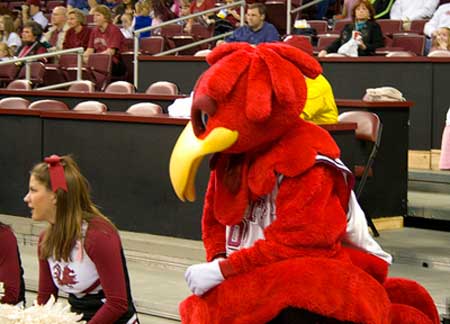
The USC mascot - cocky and a cheerleader. Thanks to BottleLeaf at flickr.com for the picture.
Learn more about South Carolina Gamecocks Football History and South Carolina Gamecocks Basketball History. For more check out our current -- South Carolina Gamecocks Football; South Carolina Gamecocks Basketball; and South Carolina Gamecocks Baseball page.
Tennessee Volunteers – Tennessee officially began calling itself the Volunteer state in 1905, in tribute to the many volunteers from the state that went off to fight in wars for the United States. The name was officially attached to the 1902 team in a story written by the Atlanta Constitution. Three years later the Knoxville Journal reported the school had officially taken the name Volunteers.
Similar to Georgia, Tennessee has a live dog "hounding" the sidelines. Smokey, a blue tick coonhound comes from a long line of blue tick hounds that started in 1953. During halftime of a game between Tennessee and Mississippi State, a contest was held to find the best hound to become the Vols on the field mascot. As each dog was introduced, the crowd applauded. When the last dog was announced, a feisty dog named Blue Smokey, the crowd cheered. When Blue Smokey heard the cheers he barked. The fans cheered louder, so he barked louder. UT had found their mascot.
Tennessee Volunteers Mascot - Smokey. Thanks to Tennessee Journalist at flickr.com for the picture.
Here's our current Tennessee Volunteers Football; Tennessee Volunteers Basketball; and Tennessee Vols Baseball page. For more check out -- Tennessee Volunteers Football History and Tennessee Vols Basketball History.
Vanderbilt Commodores – Nashville Banner writer William Beard first used the nickname in an 1897 story. This was possibly in reference to the school's founder, Cornelius Vanderbilt who was nicknamed Commodore due to his homage to his business successes.
|
As far as a live mascot, the 'Doors have a large costumed Commodore
wandering the sidelines named Mr. Commodore. Also known as Mr. C, he is
portrayed as a decorated naval commander from the late 1800’s. Read all about Vanderbilt Commodores Football History and Vanderbilt Basketball History. For more check out our current page about Vanderbilt Commodores Football; Vanderbilt Commodores Basketball and Vanderbilt Commodores Baseball page. |
The Vanderbilt Commodores mascot performs before a game between the Commodores and the Tennessee Volunteers at Memorial Gym. Photo Courtesy By Don McPeak-USA TODAY Sports. |
SEC West
Alabama Crimson Tide – Many people have wondered what a Crimson Tide looks like, or why the mascot is an elephant. There are a few theories as to what these are all about.
The first Alabama team wore crimson socks, so that is where the color comes from. Around the turn of the century a sportswriter started using a stanza from a Rudyard Kipling poem titled, The Thin Red Line, when referring to the Alabama team. Eventually, the writers became more creative and the thin red line became a crimson tide.
The story of how Alabama became associated with "elephant" goes back to the 1930 season when Coach Wallace Wade had assembled a great football team.
On October 8, 1930, sports writer Everett Strupper of the Atlanta Journal wrote a story of the Alabama-Mississippi game he had witnessed in Tuscaloosa four days earlier. Strupper wrote, "At the end of the quarter, the earth started to tremble, there was a distant rumble that continued to grow. Some excited fan in the stands bellowed, 'Hold your horses, the elephants are coming,' and out stamped this Alabama varsity.”
Strupper and other writers continued to refer to the Alabama linemen as "Red Elephants," the color referring to the crimson jerseys.
Alabama Crimson Tide Mascot - Red Elephants. Thanks to Diamondduste at flickr.com for the picture.
There is another story about how the elephant’s nickname came about. When Alabama came west for their first Rose Bowl, then were greeted by the west coast media at the train station. When the team’s luggage was unloaded, it had an elephant logo on each case. The luggage was supplied by a company in Tuscaloosa for the team to use for their travel west, and the logo of the company was an elephant. When the media saw this on the luggage, they assumed the team’s mascot was the elephants.
Learn all about Alabama Crimson Tide Football History and Alabama Basketball History. For more check out our current Alabama Crimson Tide Football; Alabama Crimson Tide Basketball and Alabama Crimson Tide Baseball page.
Arkansas Razorbacks – In 1909, Arkansas was known as the Cardinals. After a huge win over LSU, head coach Hugo Bezdek told fans his boys had played like a wild band of razorback hogs. That meant something in Arkansas, and the name stuck.
As far as a live mascot, there are no true razorbacks in Arkansas, only in Australia, but the Russian Boar is close enough and it can be seen in a cage on the sidelines. Tusk I is the live version while a number of costumed mascots attend most major sporting events.
Big Red is the traditional mascot for the University and Sue E., is the female hog and is famous for her costume changes and dancing ability. Pork Chop is the "kid" mascot. Boss Hog, a nine-foot inflatable mascot, joined the mascot family during the 1998-99 football season.
Arkansas Razorbacks mascot "Boss Hog" entertains fans at a football game. Thanks to weretable at flickr.com for the picture.
Read all about Arkansas Razorbacks Football History and Arkansas Razorbacks Basketball History. Here's our current Arkansas Football; Arkansas Basketball; and Arkansas Baseball page.
Auburn Tigers – Auburn is known as the Tigers, but early lore had the mascot name as The Plainsmen, after the poem from Oliver Goldsmith’s poem titled The Deserted Village.
|
War Eagle is the battle cry and it comes from a legend that dates back
to the Civil War. A wounded confederate solider, who was left for dead,
was joined by an equally wounded baby eagle. The solider recovered and
went on to teach at Auburn, taking the baby eagle with him, who had also
recovered from its wounds. At the first Georgia-Auburn game in 1892 the
eagle was among the spectators and when Auburn scored to took off and
soared over the field. The Auburn fans saw this and immediately yelled,
War Eagle! There is a loveable costumed mascot named Aubie who patrols the sidelines. Aubie has been on the field with the team since 1979. He began as a cartoon character on the cover of Auburn/Hardin-Simmons football program on October 3, 1959. Birmingham Post-Herald artist Phil Neel created the cartoon Tiger who continued to adorn Auburn program covers for 18 years. |
Aubie, Auburn University's costumed mascot. Thanks to DarkestIvy at flickr.com for the picture. |
Aubie's look changed through the years. In 1962, he began to stand upright and the next year, 1963, wore clothes for the first time--a blue tie and straw hat.
Check out Auburn Tigers Football History and Auburn Basketball History. For more check out our current page about Auburn Tigers Football; Auburn Tigers Basketball; and Auburn Tigers Baseball.
LSU Tigers – After a 6-0 season in 1896, the team adopted the nickname, Tigers. These Tigers had a slightly different pedigree because this one went back to the Civil War. The moniker is a reference to the state's Confederate heritage; the Louisiana troops of Robert E. Lee's Army of Northern Virginia became known as the Tigers during the Civil War in recognition of the bravery of two New Orleans brigades, the Tiger Rifles and the Washington Artillery (whose logo featured a snarling tiger's head).
|
There is a live mascot, and his name is Mike. Currently, Mike VI roams around Tiger Stadium and is the most pampered feline in Louisiana. His cage is 15,000 square feet and features state-of-the-art technologies and includes among its amenities lush plantings, a waterfall, a flowing stream that empties into a wading pond, and rocky plateaus. He even has his own website, and his home can be seen over the web on Tigercam. LSU strategically places Mike's cage net to the visiting team's locker room so they can hear what a live Tiger sounds like and further add to the intimidation of a game at Death Valley. |
LSU Tigers Mascot - Mike VI the Tiger. Thanks to Chiceaux at flickr.com for the picture. |
Mississippi State Bulldogs – Mississippi State was known as the Aggies until 1932 when the school changed their name from Mississippi A&M to Mississippi State college. They were known as the Maroons until 1961 when they changed the name to Bulldogs after the school achieved university status.
References to the name Bulldogs actually go back to early in the century, and this nickname was used almost interchangeably with both Aggies and Maroons, since at least 1905.
|
On November 30 of that year the A&M football team shut out their
archrivals from the University of Mississippi 11-0 in Jackson, Miss. The
campus newspaper, The Reflector, reported: "After the game, filled with
that emotion that accompanies every great victory, there was nothing
left for the cadets to do but to complete the great victory by showing
sympathy for the dead athletic spirit of the University, by having a
military funeral parade. |
Mississippi State Bulldogs Mascot Bully. Thanks to jwinfred at flickr.com for the picture. |
Other newspaper reports of the victory commented on the 'bulldog' style of play by the A&M eleven, and the Bulldog was soon publicly accepted as a school athletic symbol. Accounts of a 1926 pep rally in Meridian, Miss., had another bulldog parading with students.
Use as an official game mascot began in 1935 when coach Major Ralph Sasse, on 'orders' from his team, went to Memphis, Tenn., to select a bulldog. Ptolemy, a gift of the Edgar Webster family, was chosen and the Bulldogs promptly defeated Alabama 20-7.
A litter-mate of Ptolemy became the first mascot called 'Bully' shortly after Sasse's team beat mighty Army 13-7 at West Point that same year, perhaps the greatest victory in MSU football history. But Bully I earned other fame the hard way, in 1939 when a campus bus cut short his career.
Days of campus mourning followed, as Bully lay in state in a glass coffin. A half-mile funeral procession accompanied by the Famous Maroon Band and three ROTC battalions went to Scott Field where Bully was buried under the bench at the 50-yard line. Even LIFE Magazine covered to the event.
Mississippi State University Mascot, "Bully", riding onto the field before the MSU vs. Alabama football game. Thanks to Bluelightstar at flickr.com for the picture.
Here's our current Mississippi State Football; Mississippi State Basketball; and Mississippi State Bulldogs Baseball page. For more check out -- Mississippi State Bulldogs Football History and Mississippi State Bulldogs Basketball History.
Ole Miss Rebels – Currently, Ole Miss is looking for a mascot. Having ditched the Colonel Reb mascot, due to tensions from groups who see the Rebels mascot as offensive, Ole Miss currently does not have an on the field mascot. ESPN even did a short tongue in cheek commercial showing the campus search for a new mascot.
In a 2010 vote, Ole Miss students decided to choose a new mascot for the school. An Internet campaign to replace Colonel Reb with fictional Star Wars character Admiral Ackbar has gained popular support.
However the students that began the campaign insist that Admiral Ackbar is not their ideal choice for the school's mascot. Instead they intend the character as "the face of a push to start a fresh mascot search at Ole Miss." Besides, LucasFilms did not give the University permission to use the mascot.
Before the search began, Colonel Reb was the traditional sporting mascot of Ole Miss Rebels. Designed in the 1930s, the figure served as the teams' official or near-official mascot from 1979 until 2003. To some people, he resembles a white antebellum plantation owner, but to others, he simply resembles the ideal of the "Southern gentleman" of the Antebellum Age.
|
In 1936 the editor of the school newspaper proposed a contest to produce a new nickname for Ole Miss teams, then known as The Flood. Rebels were the choice of 18 out of 21 sports writers and the university's sports teams have since been known as the Rebels. Two years later, Colonel Rebel appeared for the first time as an illustration in the university yearbook. This illustration was perhaps drawn by the art editor for the yearbook that year, Billy Hix. Hix often drew his depictions of the Colonel as a plantation owner in an ante-bellum plantation setting. |
Ole Miss Rebels Mascot - Colonel Reb. Thanks to lukeamotion at flickr.com for the picture. |
Others may have also had a hand in revising and modifying the image of Colonel Rebel in those early years, such as campus bookstore owner Carl Coers and famous New Orleans cartoonist John Chase. The image appearing on the 1947 Ole Miss yearbook is a result of this process and is the one that continues to be used to this day.
In 2003, the administration eliminated Colonel Reb from the sidelines at Ole Miss athletic events as the on-the-field mascot, though he was allowed at tailgating and other unofficial university functions. A contest was held in which fans were invited to design a replacement. The athletic department chose two finalists, Rebel Bruiser and Rowdy Rebel, and invited fans to vote on their favorite. The limited fan response as well as ridicule from fans of rival schools prompted the administration to cancel the poll, so Ole Miss currently has no on-field mascot.
However, Colonel Reb remains very much alive in the public consciousness; he still wanders The Grove on game day, and he was featured in "Colonel Reb Is Crying", a song produced by Memphis, Tennessee sports talk radio host Chris Vernon, about the Rebels' on-field woes in 2006.
The Colonel Reb Foundation is a group founded to preserve the Colonel Reb image and sponsors the unofficial appearances of the mascot in The Grove.
Check out our current Ole Miss Football; Ole Miss Basketball; and Ole Miss Baseball page. For more check out -- Ole Miss Rebels Football History and Ole Miss Basketball History.
What a great history and tradition the SEC has. Here's more great stuff about SEC Football History; SEC Basketball History; SEC Football Traditions; and The Origins of SEC School Colors.
What do you think?
We'd love to hear your comments and/or opinions. If you submit them here, other visitors can read them, rate them and comment on them. An e-mail address is not required.
Southeastern Conference Football History | Alabama Crimson Tide Football History | Arkansas Razorbacks Football History | Auburn Tigers Football History | Florida Gators Football History | Georgia Bulldogs Football History | Kentucky Wildcats Football History | LSU Tigers Football History | Mississippi State Bulldogs Football History | Ole Miss Rebels Football History | South Carolina Gamecocks Football History | Tennessee Volunteers Football History | Vanderbilt Commodores Football History |
Southeastern Conference Basketball History | Alabama Basketball History | Arkansas Basketball History | Auburn Basketball History | Florida Basketball History | Georgia Basketball History | Kentucky Basketball History | LSU Basketball History | Mississippi State Basketball History | Ole Miss Basketball History | South Carolina Basketball History | Tennessee Basketball History | Vanderbilt Basketball History |
From SEC School Mascots to SEC Football | SEC Sports Blog | SEC Football Blog | SEC Basketball | SEC Basketball Blog | SEC Women's Basketball | SEC Baseball | SEC Track and Field | SEC Swimming and Diving | SEC Tennis | SEC Golf | SEC Gymnastics | SEC Soccer | SEC Softball | SEC Volleyball | Best College Sports Conference | SEC Football Bowl History | BCS Controversy | SEC vs Big Ten Debate | SEC Sports News | Current SEC Sports News | SEC Sports Pictures and Videos | SEC Sports Fan Forum | College Sports Blogs | College Football Association | SEC Sports Fan Trips | College Sports Gift | Fathead | College Sports Tailgate Party Shop | College Sports Merchandise | College Sports Apparel | SEC Sports Fan Store | SEC Football Tickets |
About Us | Contact Us | Site Search | Advertise | Terms of Use |
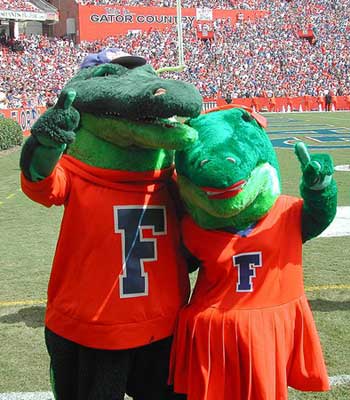
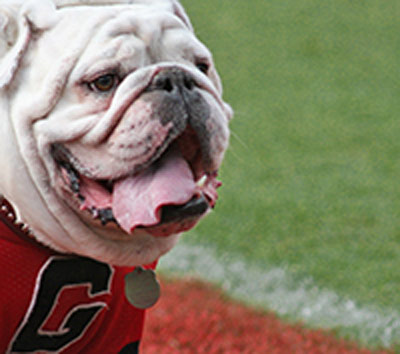
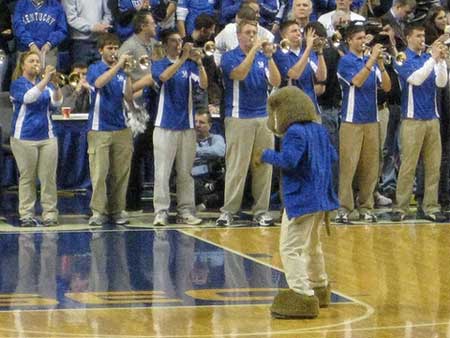
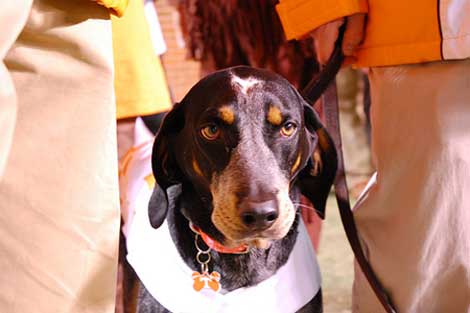
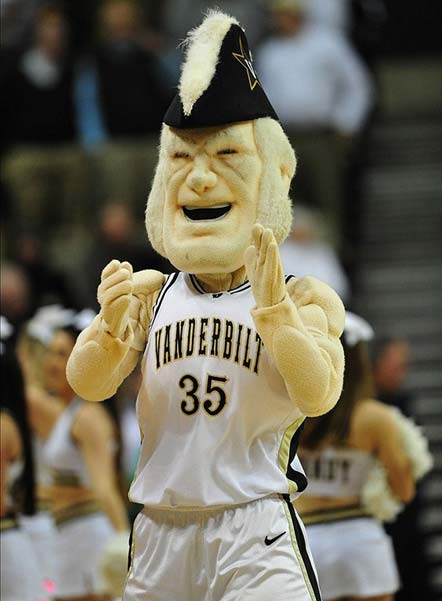
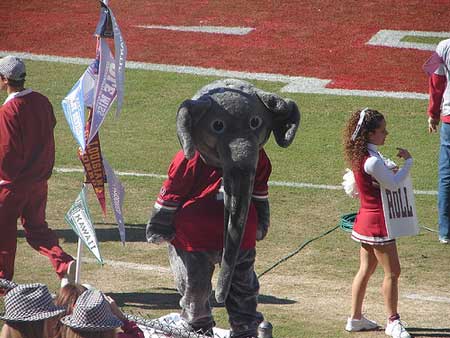
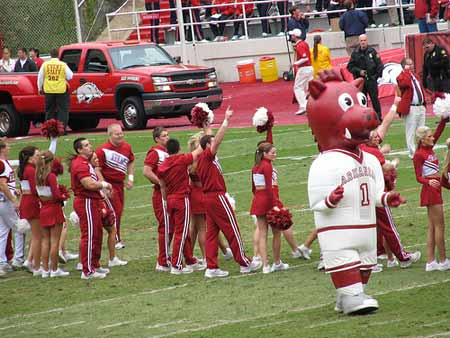
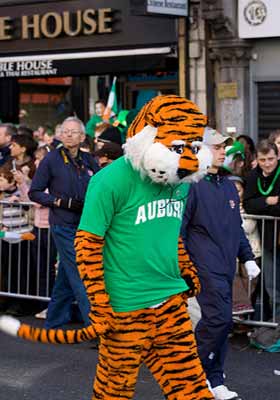
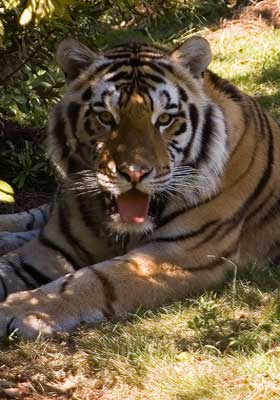
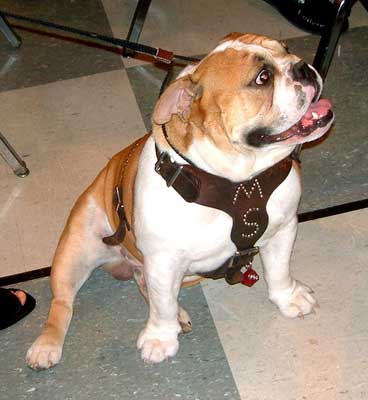
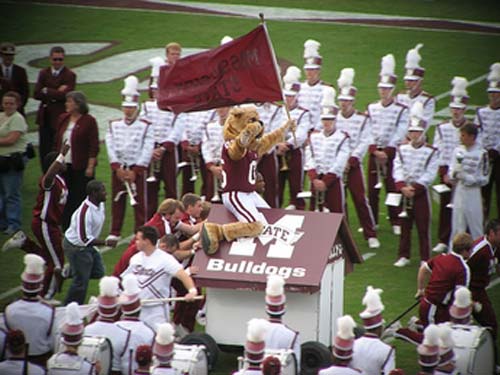
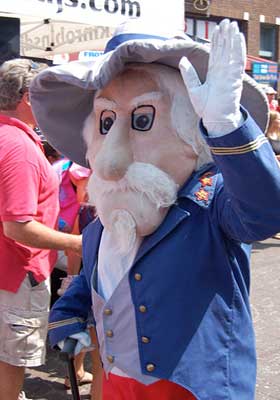





New! Facebook Comments
Leave a comment about this article in the box below and share it with your Facebook friends.